Jmsconn - 無標題

More Posts from Jmsconn and Others

2019 October 17
Moons of Saturn Image Credit: Cassini Imaging Team, SSI, JPL, NASA
Explanation: On July 29, 2011 the Cassini spacecraft’s narrow-angle camera took this snapshot and captured 5 of Saturn’s moons, from just above the ringplane. Left to right are small moons Janus and Pandora respectively 179 and 81 kilometers across, shiny 504 kilometer diameter Enceladus, and Mimas, 396 kilometers across, seen just next to Rhea. Cut off by the right edge of the frame, Rhea is Saturn’s second largest moon at 1,528 kilometers across. So how many moons does Saturn have? Twenty new found outer satellites bring its total to 82 known moons, and since Jupiter’s moon total stands at 79, Saturn is the Solar System’s new moon king. The newly announced Saturnian satellites are all very small, 5 kilometers or so in diameter, and most are in retrograde orbits inclined to Saturn’s ringplane. You can help name Saturn’s new moons, but you should understand the rules. Hint: A knowledge of Norse, Inuit, and Gallic mythology will help.
∞ Source: apod.nasa.gov/apod/ap191017.html






Total Solar Eclipse, 2019. Credits: ESA/CESAR
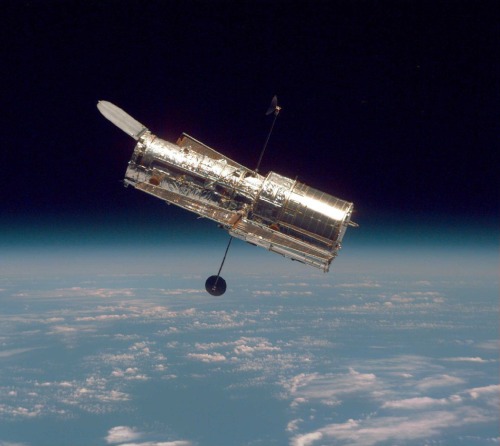
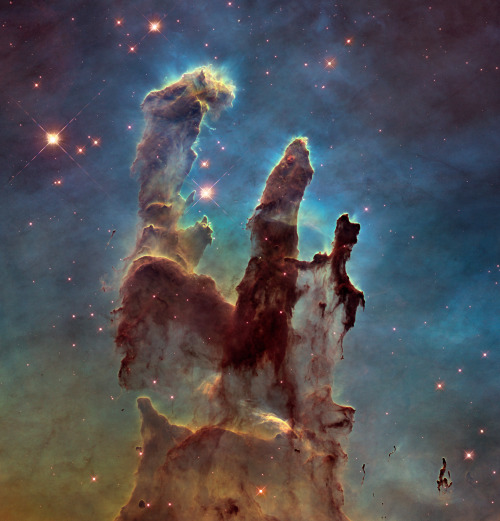
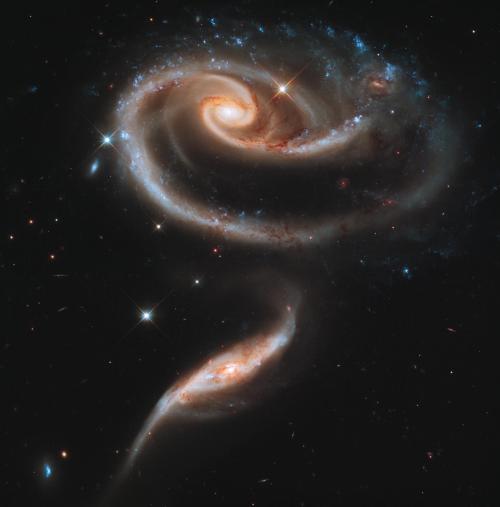
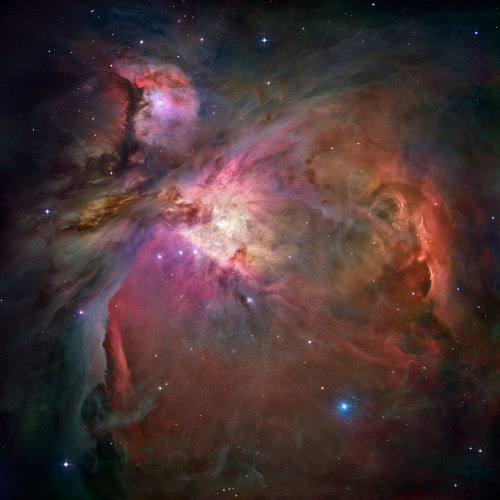
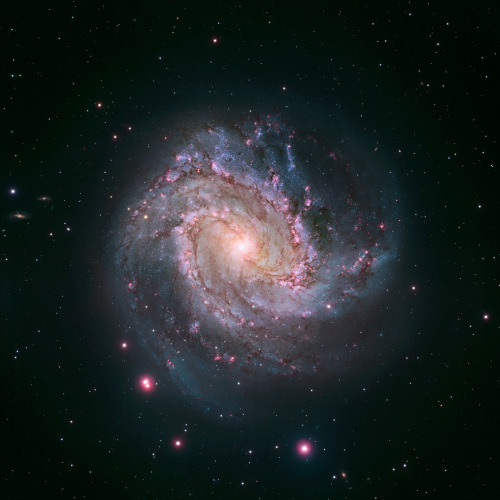
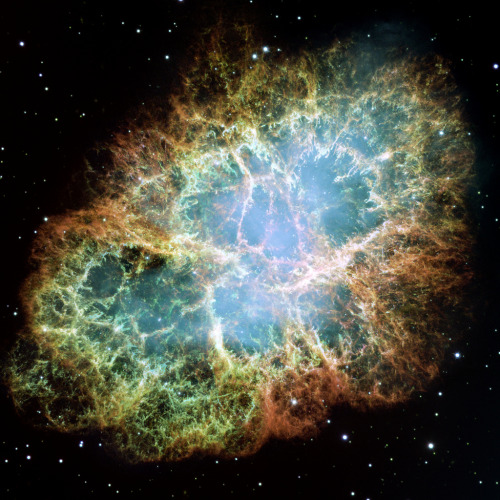
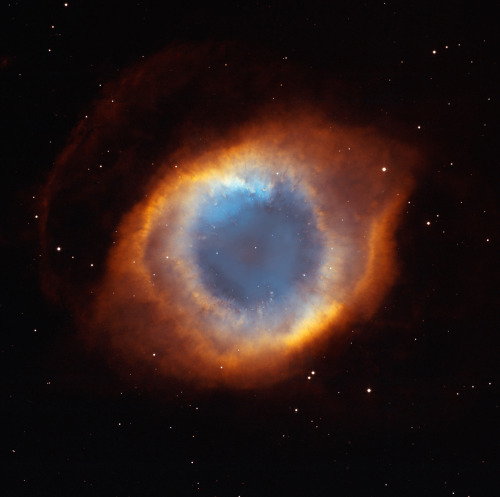
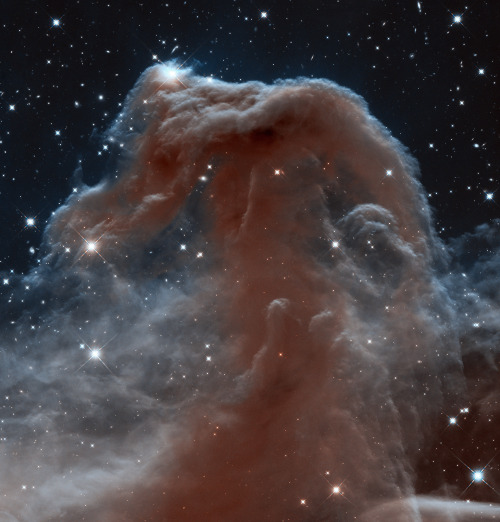

Happy Birthday, Hubble!
The Hubble Space Telescope (HST) is a space telescope that was launched into low Earth orbit in 1990 and remains in operation. Although not the first space telescope, Hubble is one of the largest and most versatile, and is well known as both a vital research tool and a public relations boon for astronomy. The HST is named after the astronomer Edwin Hubble, and is one of NASA’s Great Observatories, along with the Compton Gamma Ray Observatory, the Chandra X-ray Observatory, and the Spitzer Space Telescope.
With a 2.4-meter (7.9 ft) mirror, Hubble’s four main instruments observe in the near ultraviolet, visible, and near infraredspectra. Hubble’s orbit outside the distortion of Earth’s atmosphere allows it to take extremely high-resolution images, with substantially lower background light than ground-based telescopes. Hubble has recorded some of the most detailed visible light images ever, allowing a deep view into space and time. Many Hubble observations have led to breakthroughs in astrophysics, such as accurately determining the rate of expansion of the universe.
sourcet: Wikipedia & Overview
Image credit: NASA/ESA & Hubble










We were founded in New Taipei, Taiwan in 2005. We are a professional manufacturer of automotive diagnostic wires(OEM,OBM,ODM). For customers, we adhere to the principle of customer supremacy and strive to meet the requirements as a business philosophy. With professional technical strength, flexible production operation, and responsible and active attitude, we ensure that products gallop at high speed in the transmission of information, so as to ensure that customers can continuously get the greatest satisfaction while using the product.
www.vobd.com.tw

Wide-Field Collision
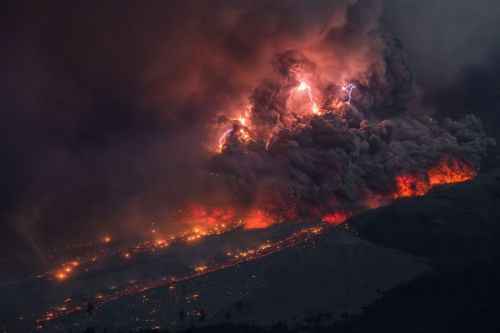
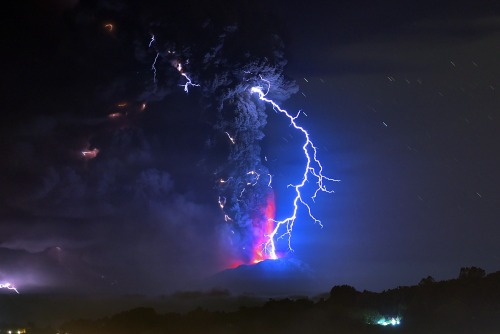
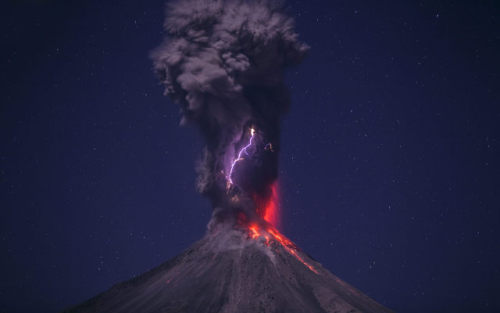
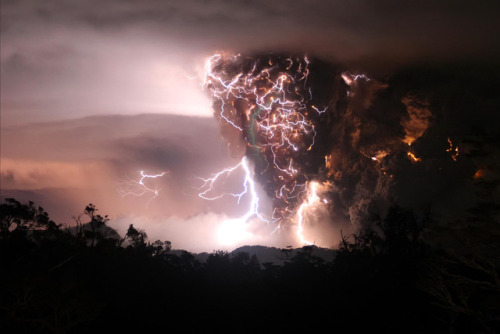
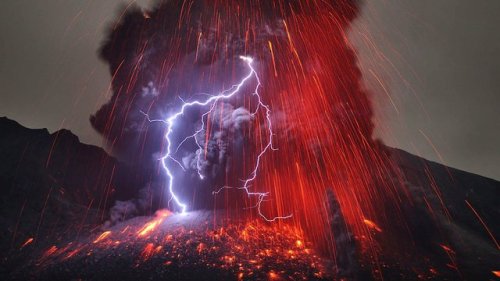
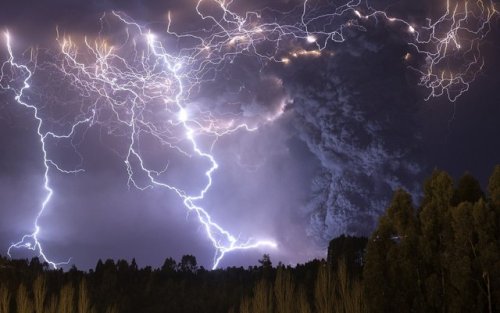
Dirty thunderstorm
A dirty thunderstorm (also volcanic lightning, thunder volcano) is a weather phenomenon that is related to the production of lightning in a volcanic plume.
A study in the journal Science indicated that electrical charges are generated when rock fragments, ash, and ice particles in a volcanic plume collide and produce static charges, just as ice particles collide in regular thunderstorms.
Volcanic eruptions are sometimes accompanied by flashes of lightning. However, this lightning doesn’t descend from storm clouds in the sky. It is generated within the ash cloud spewing from the volcano, in a process called charge separation.
source
images
To the Moon and Beyond: Why Our SLS Rocket Is Designed for Deep Space
It will take incredible power to send the first woman and the next man to the Moon’s South Pole by 2024. That’s where America’s Space Launch System (SLS) rocket comes in to play.

Providing more payload mass, volume capability and energy to speed missions through deep space than any other rocket, our SLS rocket, along with our lunar Gateway and Orion spacecraft, creates the backbone for our deep space exploration and Artemis lunar mission goals.
Here’s why our SLS rocket is a deep space rocket like no other:
It’s a heavy lifter

The Artemis missions will send humans 280,000 miles away from Earth. That’s 1,000 times farther into space than the International Space Station. To accomplish that mega feat, you need a rocket that’s designed to lift — and lift heavy. With help from a dynamic core stage — the largest stage we have ever built — the 5.75-million-pound SLS rocket can propel itself off the Earth. This includes the 57,000 pounds of cargo that will go to the Moon. To accomplish this, SLS will produce 15% more thrust at launch and during ascent than the Saturn V did for the Apollo Program.
We have the power

Where do our rocket’s lift and thrust capabilities come from? If you take a peek under our powerful rocket’s hood, so to speak, you’ll find a core stage with four RS-25 engines that produce more than 2 million pounds of thrust alongside two solid rocket boosters that each provide another 3.6 million pounds of thrust power. It’s a bold design. Together, they provide an incredible 8.8 million pounds of thrust to power the Artemis missions off the Earth. The engines and boosters are modified heritage hardware from the Space Shuttle Program, ensuring high performance and reliability to drive our deep space missions.
A rocket with style

While our rocket’s core stage design will remain basically the same for each of the Artemis missions, the SLS rocket’s upper stage evolves to open new possibilities for payloads and even robotic scientific missions to worlds farther away than the Moon like Mars, Saturn and Jupiter. For the first three Artemis missions, our SLS rocket uses an interim cryogenic propulsion stage with one RL10 engine to send Orion to the lunar south pole. For Artemis missions following the initial 2024 Moon landing, our SLS rocket will have an exploration upper stage with bigger fuel tanks and four RL10 engines so that Orion, up to four astronauts and larger cargoes can be sent to the Moon, too. Additional core stages and upper stages will support either crewed Artemis missions, science missions or cargo missions for a sustained presence in deep space.
It’s just the beginning

Crews at our Michoud Assembly Facility in New Orleans are in the final phases of assembling the core stage for Artemis I— and are already working on assembly for Artemis II.
Through the Artemis program, we aim not just to return humans to the Moon, but to create a sustainable presence there as well. While there, astronauts will learn to use the Moon’s natural resources and harness our newfound knowledge to prepare for the horizon goal: humans on Mars.
Make sure to follow us on Tumblr for your regular dose of space: http://nasa.tumblr.com

The total solar eclipse of 02 July 2019 from La Serena, Chile.
Credit: Gwenael Blanck
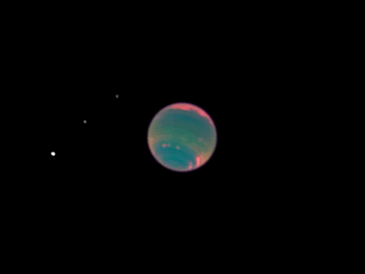
Neptune and its moons (Proteus, Larissa, Despina and Galatea)
Credit: NASA / Hubble (infrared)
-
 sarcasmandsincerity reblogged this · 5 years ago
sarcasmandsincerity reblogged this · 5 years ago -
 sarcasmandsincerity liked this · 5 years ago
sarcasmandsincerity liked this · 5 years ago -
 nlockett reblogged this · 5 years ago
nlockett reblogged this · 5 years ago -
 nlockett liked this · 5 years ago
nlockett liked this · 5 years ago -
 bighead-9 liked this · 5 years ago
bighead-9 liked this · 5 years ago -
 mayorofpears liked this · 5 years ago
mayorofpears liked this · 5 years ago -
 eidolonlathi reblogged this · 5 years ago
eidolonlathi reblogged this · 5 years ago -
 lostinlogicerror reblogged this · 5 years ago
lostinlogicerror reblogged this · 5 years ago -
 lostinlogicerror liked this · 5 years ago
lostinlogicerror liked this · 5 years ago -
 darthmelyanna reblogged this · 5 years ago
darthmelyanna reblogged this · 5 years ago -
 mloyasworld liked this · 5 years ago
mloyasworld liked this · 5 years ago -
 super-blubb reblogged this · 5 years ago
super-blubb reblogged this · 5 years ago -
 reddog1984 reblogged this · 5 years ago
reddog1984 reblogged this · 5 years ago -
 mega-cesarcab-blr liked this · 5 years ago
mega-cesarcab-blr liked this · 5 years ago -
 jayquestion liked this · 5 years ago
jayquestion liked this · 5 years ago -
 uniquekidmuffindonkey liked this · 5 years ago
uniquekidmuffindonkey liked this · 5 years ago -
 maggot-withanf reblogged this · 5 years ago
maggot-withanf reblogged this · 5 years ago -
 chriss536 liked this · 5 years ago
chriss536 liked this · 5 years ago -
 yourwriters liked this · 5 years ago
yourwriters liked this · 5 years ago -
 gofiguresposts liked this · 5 years ago
gofiguresposts liked this · 5 years ago -
 v01dgalaxy reblogged this · 5 years ago
v01dgalaxy reblogged this · 5 years ago -
 v01dgalaxy liked this · 5 years ago
v01dgalaxy liked this · 5 years ago -
 thetipofmypendoesthetalking reblogged this · 5 years ago
thetipofmypendoesthetalking reblogged this · 5 years ago -
 my-spelling-is-atrocious reblogged this · 5 years ago
my-spelling-is-atrocious reblogged this · 5 years ago -
 elsamybelsa liked this · 5 years ago
elsamybelsa liked this · 5 years ago -
 delta22s reblogged this · 5 years ago
delta22s reblogged this · 5 years ago -
 lord-ofthe-marvel liked this · 5 years ago
lord-ofthe-marvel liked this · 5 years ago -
 whiteeyedpanther reblogged this · 5 years ago
whiteeyedpanther reblogged this · 5 years ago -
 physco219912ocsyhp reblogged this · 5 years ago
physco219912ocsyhp reblogged this · 5 years ago -
 physco219912ocsyhp liked this · 5 years ago
physco219912ocsyhp liked this · 5 years ago -
 09-30-19 liked this · 5 years ago
09-30-19 liked this · 5 years ago -
 luciferspoison liked this · 5 years ago
luciferspoison liked this · 5 years ago -
 untilnothingslefttodesire liked this · 5 years ago
untilnothingslefttodesire liked this · 5 years ago -
 90sflowerchild reblogged this · 5 years ago
90sflowerchild reblogged this · 5 years ago -
 trinidaddy reblogged this · 5 years ago
trinidaddy reblogged this · 5 years ago -
 futurewoman liked this · 5 years ago
futurewoman liked this · 5 years ago -
 matthewjopdyke liked this · 5 years ago
matthewjopdyke liked this · 5 years ago -
 distresscalls liked this · 5 years ago
distresscalls liked this · 5 years ago -
 honeyedvenom reblogged this · 5 years ago
honeyedvenom reblogged this · 5 years ago -
 falsesavior liked this · 5 years ago
falsesavior liked this · 5 years ago -
 officialasianguy liked this · 5 years ago
officialasianguy liked this · 5 years ago -
 slowlydrifting reblogged this · 5 years ago
slowlydrifting reblogged this · 5 years ago -
 eepybibes liked this · 5 years ago
eepybibes liked this · 5 years ago
